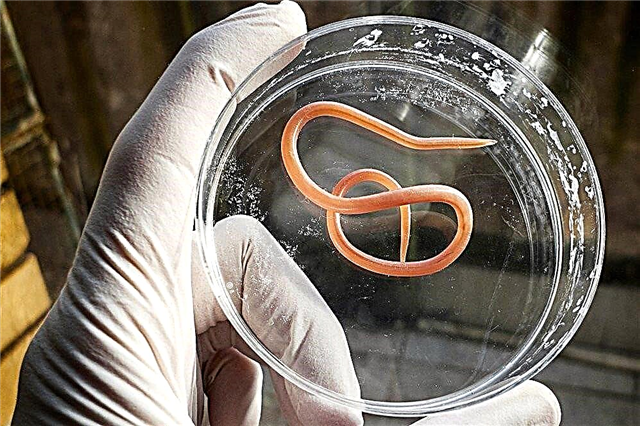The introduction of complementary foods is an important stage in the life of every infant, so it is not surprising that parents perceive the rejection of new foods with anxiety and grief. The advice of experts will help you understand how a mother should behave so that the child begins to eat porridge and mashed potatoes.
New nutrition in a child's life
The main food of a child up to six months of age is breast milk or milk formula. Another option is a mixed diet that combines both types of food. The meaning of complementary foods is that the child is transferred to the traditional menu at the moment when his digestive tract is ready to digest adult foods.
The introduction of the baby to complementary foods is extremely careful, since his digestive tract is already used to milk or formula. If parents want to avoid intestinal colic, diarrhea and other problems, it is necessary to know the optimal age for the introduction of new foods and follow the principles of switching to adult food.
According to many sources, the optimal age for introducing complementary foods is six months, and the optimal weight is at least 6.5 kilograms. Before four months, it is strongly not recommended to change the infant's diet to an older one.
Physiological parameters of readiness
It should be clarified that such periods of 6 months are considered to be rather conditional. Every child "matures" purely individually and at its own pace.
The gastrointestinal tract of some children is already mature at the age of six months, the digestive system of other children cannot cope with new products even at 7 months. If you offer unfamiliar food at a time when the child's body is not ready for it, the child will simply refuse complementary foods. This is why it is so important to know the principles of physiological preparedness.
 the baby can sit, hold a spoon in his palm. The importance of these skills is that the baby must directly participate in the process itself. And for this you need to be able to take a semi-vertical position, hold a spoon in your hand and bring it to your mouth;
the baby can sit, hold a spoon in his palm. The importance of these skills is that the baby must directly participate in the process itself. And for this you need to be able to take a semi-vertical position, hold a spoon in your hand and bring it to your mouth;- the reflex of pushing food out fades away. At the age of six months, reflexive actions that induce the baby to push out solid food lumps with the tongue begin to fade away. This means that the child is already able to consume something other than liquid milk and formula. If the porridge or puree is pushed back or vomiting is observed, the child's body is not ready for complementary foods;
- normal reactions of the gastrointestinal tract. If, when introducing new dishes, painful sensations in the abdomen, diarrhea, flatulence are observed, therefore, the baby's digestive system is not mature enough for such experiments. Especially such signs should be noted if the child is only 5 months old.
A 6 month old baby refuses unfamiliar products? Probably, his body is not yet ready for such innovations. Wait 2 to 3 weeks, then re-offer porridge or vegetable puree. Just make sure that the moment of re-acquaintance does not coincide with teething, colds and other unfavorable factors.
Psychological parameters of readiness
In addition to physiological readiness, the baby's interest in new food should also be present. If the child shows a clear interest in the adult table, the desire to try unfamiliar products, we can talk about psycho-emotional readiness for complementary foods. In such a situation, children will not refuse food, on the contrary, tasting new products will take place in the most friendly atmosphere. Psychologists call this phenomenon "food interest."
Psychological readiness for feeding is formed in the same way in natural scientists and in babies who eat the mixture. You can understand that a child is emotionally ready to introduce unfamiliar dishes into the diet by several signs:
- the infant demonstrates a clear interest in adult food. Sitting on her mother’s lap at the dinner table, she pulls the handles to the contents of the plates and sends it to her mouth;
- the child is unhappy if he is not given an adult dish. Moreover, we are talking here about products, and not about accompanying cutlery. Some children may just want to play with a fork or tear a napkin apart;
- the baby in every possible way seeks to get adult food. Even if his mother distracts him with a toy, a bright object, breast milk, he again and again insists on his desire to taste the food he likes.
An interest in adult food develops when a sitting child is drawn to the family table. If he daily sees the culture of household behavior at the table, dining rituals, tasting new dishes, problems with the introduction of complementary foods, as a rule, do not arise.
Why does the child eat poorly?
Based on the factors of the baby's readiness to change the diet, it is possible to establish and explain the main reasons for the child's unwillingness to try and eat new foods:
 excessively early feeding (up to four months of age), when the baby has not yet secreted digestive enzymes that help to assimilate adult food;
excessively early feeding (up to four months of age), when the baby has not yet secreted digestive enzymes that help to assimilate adult food;- if a child of 8 months does not want to eat complementary foods, it is possible that he still has an infant pushing reflex, which does not allow him to perceive solid food;
- the baby is not interested in new products, because the parents did not plant him next to them, did not show how pleasant the taste of adult dishes is;
- when a new dish was introduced, the baby did not feel well, his teeth were cut, his tummy hurt, there was a fever and other symptoms of any malaise;
- if the mother forces (even with good intentions) to eat complementary foods, the child may eventually refuse new products, or he will form a negative attitude towards the process of eating;
- another possible cause is a negative first food experience. For example, the vegetable puree turned out to be bitter or sour, or the porridge turned out to be too thick.
Do not forget that new products are alien to children. Both the one-month-old baby and the six-month-old baby receive sweetish mother's milk or tasteless milk formula every day. Therefore, it is not surprising that the child begins to be capricious and show character.
Features of the introduction of complementary foods for different types of feeding
Naturally, there are some differences in the development of the digestive system of children, depending on whether the baby is artificial or he feeds on mother's milk. Do I need to introduce complementary foods earlier if the child eats formula? Let's talk about this in more detail.
Breast-feeding
Imagine a situation when a breastfed child does not want to eat vegetable puree or buckwheat porridge. What should mom do in a similar situation? In fact, no special effort is needed.
According to experts from the World Health Organization, it is mother's milk that remains the main food and the main source of nutrients for children under 12 months. Any other products - vegetable, meat or cereals - are introduced until the age of one year in order to introduce the baby to new food.

A twelve-month-old baby gets 75% of all nutritional components from mother's milk only and only 25% from adult food. According to some studies, babies under 8 months old can get all the nutrients they need from breast milk. Thus, breastfeeding covers most of the needs of babies under one year old.
So the HV experts advise those mothers whose babies eat poorly at eight months of age, calm down, not get nervous and act according to the circumstances. Does your baby love only squash puree? Let him eat it for now. Refuses meat delicacies? Try to return to them after a while.
The addiction to a new product is formed gradually. According to the point of view of psychologists, in order for a habit to arise, it is necessary to repeat a certain action at least 21 times. So, forming an interest in a particular food, you need to regularly offer it to your baby for testing. Naturally, you don't need to force him.
Thus, the age of six months is the initial and approximate period for the introduction of new products into the children's diet. An infant will join a full-fledged adult table only after one year of age. And this is completely natural, if, of course, the mother continues to breastfeed.
Artificial feeding
Of course, breast milk is more valuable in all basic respects than artificial formula. But modern manufacturers have managed to develop such adapted "surrogates" that they are as close as possible in composition to a natural product.
Thus, experts in infant feeding are convinced that in the case of artificial nutrition, breast milk substitute can serve as the main source of the necessary substances for the full development of a child also up to 12 months of age.
There is an opinion that the early introduction of complementary foods to a baby on artificial feeding is not due to anything. On the contrary, babies are easier to adapt to new food due to the enzymes obtained from breast milk. In artificial people, the gastrointestinal tract is formed with some delay.
Experts from the World Health Organization recommend introducing new products with artificial feeding at approximately 6 months (at 5 or 7 months). Before that, children who receive a high-quality adapted formula do not need other food.
Complementary feeding rules
The question of what to do if the child does not eat complementary foods may not arise if the development of undesirable phenomena is prevented. To do this, you need to know the main rules for introducing complementary foods into the baby's diet.
Focus on the child
Pay less attention to the advice of friends and relatives. Of course, grandmothers and aunts have experience in caring for their children, but here the key word is “ours”. Each baby develops at an individual pace, so seemingly useful recommendations may not be suitable for a specific case.
If you have any questions, it is best to contact your pediatrician. He will talk about the norms, but at the same time he will point out the characteristics of the baby. Mom's intuition and experience of the attending doctor are the key to the success of the introduction of the first complementary foods.
Never imitate friends who boast that their five-month-old babies are already eating meat or vegetable purees with might and main. If you see that the baby is not ready for the introduction of complementary feeding, postpone this important point for a while.
Only feed a healthy baby
You cannot taste new foods if the baby is unwell. High temperature, fever, viral infections, teething, dysbiosis, the period before or after vaccination - all these factors are poorly combined with the introduction of complementary foods.
If we neglect this factor, then the baby may subconsciously associate the new product with his painful condition. In addition, the child's body is already under stress, as it is forced to resist the disease. As a result, the addiction will be significantly delayed.
Let's take a little
Any unfamiliar product should be given to the child in a very small amount in order to avoid negative reactions from the gastrointestinal tract or allergies.
This caution is extremely important, since the little man is trying new food for the first time. It is not known how his body will react to a seemingly harmless apple or zucchini.
You can start with the minimum dose - half a teaspoon, despite the fact that the child may already be seven or eight months old. Over the course of a week, you should gradually bring the volume of the new product to the norm, which corresponds to age.

Give up violence
Forcing a child to eat is an extremely harmful and unproductive parenting tactic. You cannot persist in introducing complementary foods, since this can form improper eating behavior from an early age.
On the other hand, the baby's diet should be varied, so it is important to distinguish between usual moodiness and dislike for a particular product. In the first case, you should try again to offer mashed potatoes or porridge after a while.
Introduce one product at a time
Only one new product should be introduced to an infant at a time. This is the so-called monocomponent principle. If you are giving a vegetable puree to a child, then you can not mix zucchini and carrots. Zucchini is offered first, and only then carrots.
Consistent familiarity with the products helps to determine how the child's body reacts to a particular product. If the baby develops a rash or diarrhea, it will be possible to understand what exactly caused the undesirable consequences.
Start with the "right" products
Most often, vegetable puree becomes the first option for complementary foods. But this is if the weight of the baby corresponds to the age indicators. In case of underweight, nutrition experts recommend giving cereal dishes - various types of cereals.
Do not start complementary foods with chopped sweet fruits. The pleasant taste of these dishes can be the reason that in the future the child will refuse more bland vegetable purees.
What if the child does not eat complementary foods?
So, the generally accepted principles of introducing complementary foods are clear. But how should parents behave if the child refuses complementary foods and in every possible way demonstrates disapproval of the mother's desire to introduce him to new products?
Many sources tell how to accustom a baby to unfamiliar dishes. We have chosen the most effective and popular methods:
 Try to develop your child's interest in new foods. To do this, he must be seated at the family table, given a little bit of what adult household members eat. Of course, the food offered must be appropriate for the age of the baby.
Try to develop your child's interest in new foods. To do this, he must be seated at the family table, given a little bit of what adult household members eat. Of course, the food offered must be appropriate for the age of the baby.- Offer new foods to a hungry baby. A child who has just had a hearty meal with mother's milk or formula will not want to try something else. But after a long walk, outdoor games, the crumbs will have an appetite, which you can use.
- If the baby does not want to eat ready-made canned purees, try to make complementary foods yourself. Preparing the first children's meals is very simple - it is enough to boil vegetables (or steam them) for a quarter of an hour, and then grind them with a blender.
- Always look for an alternative to a dish that your baby doesn’t like. If the child refuses zucchini, offer broccoli. If the cottage cheese is not to your taste, let's give kefir. For a baby who does not like meat, offer more protein products - cottage cheese or fish.
If the baby, being accustomed to a certain product, suddenly begins to refuse it, take a break. In a week or a little more, interest in a familiar dish will surely return, and the crumb will eat mashed potatoes or porridge with appetite.
Solving common problems
Children need a certain amount of time to get used to previously unfamiliar products. This process is often delayed or accompanied by some problems, we will tell you about the most common difficulties in more detail.
The kid does not want to eat from the spoon
Acquaintance with solid foods occurs with the use of a spoon.Most often, special plastic devices are purchased for complementary foods, which are lightweight and attractive in appearance.
 To avoid problems with cutlery and complementary foods, many mothers give water from a spoon, refusing to use a bottle (in this case, we are talking about natural scientists). First, a coffee spoon comes into play, and then a tea spoon.
To avoid problems with cutlery and complementary foods, many mothers give water from a spoon, refusing to use a bottle (in this case, we are talking about natural scientists). First, a coffee spoon comes into play, and then a tea spoon.
If the child categorically does not eat from a spoon, allow him to try to take food with pens. And as soon as he becomes addicted to complementary foods, put cutlery in the palm of your hand. Of course, it will be possible to forget about cleanliness for a while, but the formation of a good habit in this case is much more important.
The child does not want to eat porridge or vegetable puree
The child may not like the vegetable puree because of the insipid taste, but you should not sweeten it too much, otherwise in the future the little man will refuse any savory dishes.
The same is true for porridge, which is usually added after vegetable ingredients. The most popular cereals are buckwheat, rice or corn. Boil cereals for babies in water, avoiding the addition of cow's milk and granulated sugar.
If your child doesn't eat porridge or vegetable products, try cheating a little. Add a small amount of breast milk or artificial formula to the prepared meal. The familiar taste will help your baby get used to the new diet sooner.
Remember that complementary feeding is not a substitute for breast milk or an adapted formula, but an addition to the previous type of baby food. As already mentioned, up to a year, the children's menu will only consist of 25% complementary foods. Therefore, do not worry, but be patient.
Psychologist's advice
Let's move on from medical recommendations to psychological ones. Experts advise not to dwell on the process, but to perceive it as another stage of the child's growing up. In the end, a baby will not eat exclusively milk at three years old!
What else should parents keep in mind?
- You can't punish a kid for an inverted bowl or a face smeared with porridge. The baby is still motor awkward, so accuracy is unusual for him. In addition, excessive mother's adherence to principles can negatively affect the child's nutritional interest.
- Do not force your child to eat, but at the same time try to diversify the children's menu by intelligently offering various dishes. Excessive selectivity in products is fraught with future whims or upbringing of a little girl.
- Get colorful cutlery. Let your favorite baby cartoon characters be depicted on plates, mugs. The spoons should also attract the attention of the little eater.
Try to stick to a specific regimen. Every day it is necessary to offer the crumbs porridge for breakfast at the same time. But for an afternoon snack, let the child try vegetable dishes. This routine forms the correct eating behavior.
Thus, the introduction of complementary foods requires maximum attention from parents and at the same time calmness. Do not worry if, for example, a child at 8 months old does not eat buckwheat porridge or pumpkin puree. Until a year old, the main dish for a baby is mother's milk or mixture.
The main task of parents during the second half of a baby's life is to acquaint him with new products, to encourage food interest. After a while, the baby will move on to the usual family diet and will be happy to gobble up her mother's culinary masterpieces.

 the baby can sit, hold a spoon in his palm. The importance of these skills is that the baby must directly participate in the process itself. And for this you need to be able to take a semi-vertical position, hold a spoon in your hand and bring it to your mouth;
the baby can sit, hold a spoon in his palm. The importance of these skills is that the baby must directly participate in the process itself. And for this you need to be able to take a semi-vertical position, hold a spoon in your hand and bring it to your mouth; excessively early feeding (up to four months of age), when the baby has not yet secreted digestive enzymes that help to assimilate adult food;
excessively early feeding (up to four months of age), when the baby has not yet secreted digestive enzymes that help to assimilate adult food; Try to develop your child's interest in new foods. To do this, he must be seated at the family table, given a little bit of what adult household members eat. Of course, the food offered must be appropriate for the age of the baby.
Try to develop your child's interest in new foods. To do this, he must be seated at the family table, given a little bit of what adult household members eat. Of course, the food offered must be appropriate for the age of the baby.

